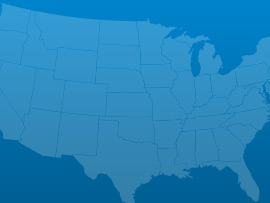 2016 Report Card for Tennessee's Infrastructure
2016 Report Card for Tennessee's InfrastructureTennessee, the “Volunteer State,” the “Country Music Capital of the World,” boasts the official slogan, “Tennessee – America at Its Best.” Already, Tennessee has been named “Best place to move to.” What would it take for Tennessee to be known as the “Home of America’s Best Infrastructure”?
The American Society of Civil Engineers’ (ASCE) 2016 Report Card for Tennessee’s Infrastructure grades Tennessee’s infrastructure a “C” – the same grade the state received in 2009. Considerable investments have been made across the state to improve our infrastructure. Funds from the 2009 American Recovery and Reinvestment Act initiated numerous projects. The Tennessee Department of Transportation’s (TDOT) Better Bridges Program replaced, repaired, or rehabilitated 193 state-owned structurally deficient bridges. The Tennessee Department of Environment and Conservation (TDEC) received funding to upgrade facilities at two of the state’s premier parks. However, these investments won’t stop our existing infrastructure from aging, nor stop the need for infrastructure to keep up with dramatic population growth.
We rarely consider the impact infrastructure has on our daily lives, from the water we drink and the roads we drive on, to the power we use to light our homes and the food we put on our tables. Volunteers from the Tennessee Section of ASCE developed this Report Card for Tennessee’s Infrastructure to help all Tennesseans understand the state of our infrastructure so we can work together to earn our next “Best of…” award: Tennessee – Home of America’s Best Infrastructure.
Read the full Report Card here.
Read the Tennessee Brochure here.
 Aviation
Aviation Bridges
Bridges Dams
Dams Drinking Water
Drinking Water Inland Waterways
Inland Waterways Roads
Roads Schools
Schools Transit
Transit Wastewater
WastewaterA: Exceptional, B: Good, C: Mediocre, D: Poor, F: Failing, ?: Incomplete
Each category was evaluated on the basis of capacity, condition, funding, future need, operation and maintenance, public safety, resilience, and innovation
Aviation
69 public-use airports
Bridges
1,157 of the 20,058 bridges are structurally deficient
Bridges
$48.20 million in bridge funds came from the Federal Highway Bridge Fund in 2011
Dams
100% of the state regulated dams have an Emergency Action Plan
Dams
148 high hazard dams
Drinking Water
$2.7 billion in drinking water infrastructure needs over the next 20 years
Energy
9.125 gigawatt-hours of renewable energy every year, ranking it 8th
Hazardous Waste
15 sites on the National Priorities List
Inland Waterways
950 miles of inland waterways, ranking it 11th nationally
Levees
100 miles of levees
Ports
34.1 million short tons of cargo in 2012, ranking it 22nd nationally
Public Parks
$1.6 billion of unmet needs for its parks system
Rail
25 freight railroads covering 2,656 miles across the state, ranking 27th nationally by mileage
Roads
10,401 of the state’s 95,523 public roads are major roads, and 6% are in poor condition
Roads
$1.0 billion a year in costs to motorists from driving on roads in need of repair, which is $225 /yr per motorist
Schools
$3.6 billion in estimated school infrastructure funding needs
Transit
29.4 million annual unlinked passenger trips via transit systems including bus, transit, and commuter trains
Wastewater
$1.4 billion in wastewater infrastructure needs over the next 20 years

March 03, 2017
As the President’s repeated in his address to Congress his pledge to dramatically increase infrastructure spending to the tune of $1 trillion, various Congressional Committees

March 01, 2017
On Tuesday night, President Trump addressed a joint-session of Congress for the first time in his presidency. Infrastructure was among the many issues he discussed.

February 28, 2017
U.S. motorists set a new record for vehicle miles travelled (VMT) in 2016, driving over 3.2 trillion miles, an increase of 70 billion miles from

February 17, 2017
Romantic dates, the Grammy awards and celebrating black history are not the only milestones of this week; the Oroville dam crisis in California and the